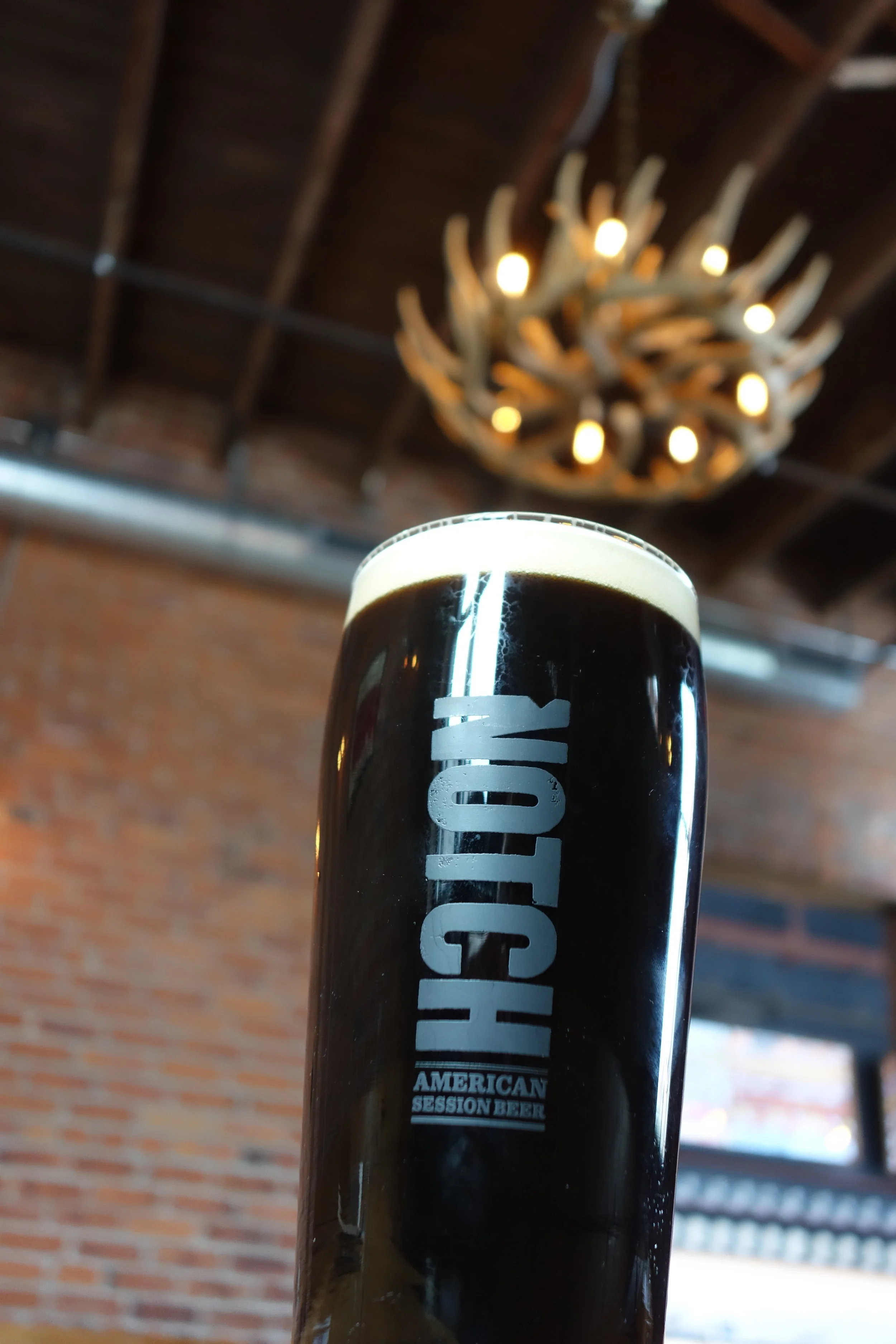Suspect Device - Session stout is a real thing.
One of the most iconic and consumed session beers in the US is the very old style of Dry Irish Stout. It may not be recognized as a lower ABV offering, because the producers rarely, if ever, talk about it. It makes some sense to me, as I’ve had countless conversation with loyal Guinness drinkers who believe their beloved stout is a hearty one. It also makes no sense to me, not extolling the virtues of session stout, as the very nature of the beer is based on pub session drinking. Anyway, Guinness seems to be doing OK.
We had some discussion at Notch about St Paddy’s Day landing on a Saturday, and if we should brew an Irish stout. I never look at our Tap Room as a beer bar, where we try to appeal to a wide variety of consumers, because that ultimately leads you away from what you are either good at, or more importantly, what you believe in. The Tap Room is the embodiment of Notch and our ethos, so in brewing and conceiving new beers, we don’t roll beer out for a one day boost in sales. The thought of brewing an Irish Stout certainly felt that way, so I said “no fucking way” to that idea.
Creativity comes from every direction some days, and sometimes it comes from an experience 23 years ago. Brienne Allan (Notch’s Production Manager) and I were tasting our Dark Mild we put into Privateer Rum barrels a while back. The Mild took on rum and oak character as expected, but it also had a higher acidity than expected. It was interesting, but not quite delicious. So we test blended it with some Cerne Pivo to see if we could use the beer as a blend in something we would brew in the future, and the blend got the creativity moving.
I remembered a discussion while I was at the Siebel Institute, a brewing school in Chicago, some 23 years ago. My lab partner worked at Tooheys in Australia (a very large brewing company), and they brewed a Dry Irish Stout under contract (for a very large Irish brewer). There was always a rumour that this large Irish brewer (name withheld to protect me and anyone else) used two gyles (batches) in producing the beer, one older and intentionally soured, and one younger and clean. The idea was that the acidity had a significant impact on complexity and texture, and imparted a pleasant dryness. My lab partner, without breaking any non-disclosure policies, confirmed that older batches were blended, and when I asked more he stopped talking about it. But I had all the confirmation I needed.
We were about 3 weeks out from St Paddy’s day when the idea of a blended Irish Stout became an idea we wanted to make a reality. Brienne and I brainstormed the process to make it happen (how not to have lactic acid producing bacteria touch the rest of our process equipment being one). Under a very short time frame, the recipe was finalized, tank schedules adjusted, and a week later we were brewing the base beer. And just this week we tested blends, honed in on a flavor profile, rigged up some interesting filling apparatus and kegged off the blend. (Shout out to Shane McConnell of Modern Draft for McGivering up some equipment on his snow day off.)
And the result? Tell me session beer can not be complex and delicious and I’ll put this beer in front of you everytime. It initially tastes like a straight on Dry Irish Stout, but then things start to pop up on your tongue and aromatics start to change - a hint of oak, some very faint rum, and the drying but totally in balance acidity.
The beers that are the most fun are true collaborations, where the entire team has input and responsibility, and this was a true team effort. Also, big thanks to the Maggie Campbell and the crew at Privateer Rum for getting this ball rolling. They had two rum casks waiting for us when we opened Salem, and almost two years later we have something they’ll be proud of.
- Author: Chris

